What's Wrong With This Picture: ProMaster Of Rustbits Edition

There are few traditions at TTAC as hallowed as that of the “low-quality point-and-shoot photo used as centerpiece of article”. The undisputed master of this genre, the Mapplethorpe of the grainy tree-growing-mysteriously-out-of-a-car’s-trunk-just-above-the-glowing-date-stamped-on-the-shot, was TrueDelta’s Michael “TrueDelta” Karesh, of TrueDelta. Some of his work was so bad it approached the status of art. If I had space on my walls at home, I’d enlarge and frame some of the shots, and give them names, like Silver Hump On Equally Silver Car, In Shadow. Then I would sell them to wealthy Russian immigrants and become rich enough to fund my long-awaited Lifetime autobiographical movie in which Colin Farrell would get fat just so he could play me in my forties.
So as you look at the Zaxxon-esque pixelation of the above photo, try to think of it less as “Jack doesn’t own an actual camera” and more like “Jack is honoring the spirits of all who have gone before under the red-and-white masthead”. Or something like that. And before you waste too much time trying to figure out what the photo actually shows, I’ll tell you: it’s the door hinge on a nearly new RAM ProMaster cargo van, and it is rusting.
The cynic in me says, “Well, the Mercedes Sprinter has been, and continues to be, the most rust-prone vehicle since the 1983 Civic 1500GL, and it continues to sell in remarkable volume at prices that could almost be characterized as ‘predatory’ compared to the outgoing Ford Econoline and Chevy Express. In light of that demonstrated customer apathy, why shouldn’t the ProMaster rust? For that matter, why shouldn’t the Transit rust? The old Transits had reputations for rust in the UK long before we ever saw the nameplate here.”
The former Ford van salesman in me, on the other hand, looks at the current lineup of available “Euro-style” vans and wonders whether American commercial customers really want them. Consider the following options:
- 2015 RAM Promaster, 118″ WB, 3.6L Pentastar/280HP, $29,735
- 2015 Ford Transit, 130″ WB, 3.7L Duratec/275HP, $29,735
- 2015 MB Sprinter, 144″ WB, 2.1L Diesel/161HP, $35,995
The outgoing E-150 was nominally priced at $28,200 and offered much less space than any of these. The Chevrolet Express, the last of the old-school vans, starts at $29,555. So what’s the problem? It’s just this: the old vans didn’t sell for anything close to MSRP, and they lasted more or less forever. In the late Nineties we used to shove six-cylinder 150 Econolines out the door for fifteen grand all day. As late as two or three years ago, the major dealers were still selling base vans for $19,995 on the weekends.
The new vans cost more, they have fewer incentives available, and the dealers have less room to move. It also remains to be seen how expensive they will be to operate. The Sprinter has gained a reputation over the years for requiring frequent and costly service. It also rusts, particularly in the salt states. I’ve been reading the European commercial-van sites and, from what I can gather, Ford has made major strides with the current generation Transit. The Fiat Ducato? Well, it’s intended for use in countries like Italy and France. How well will it do in Ohio?
The photo above suggests it won’t thrive in places where any unprotected metal rusts overnight, but I could be wrong about that. One swallow does not a summer make, and one rusty hinge doesn’t mean that the ProMaster will rust like the Sprinter. But if I ran a small business, I’d wonder.
I’d also wonder why, in a segment where low initial cost and longevity mean about as much to the customers as quarter-mile time does to buyers of supercharged ponycars, the manufacturers have collectively forced an “upgrade” on those customers at considerable expense. Say what you like about the old vans, they were durable and very well-understood. I have no doubt the Transit is better in every way than the old E-150, which wasn’t a modern design when I was selling it in 1996. But the additional cargo space and increased fuel economy mean very little to customers who don’t fill the box all the way and who leave the vans idling in loading zones half of the time. They’d rather have hinges that don’t rust. Or if they’re going to rust, they should at least be bulky enough to last a while with rust on them.
Alfred North Whitehead wrote, “It is the business of the future to be dangerous…” As I survey the current automotive landscape, with its super-sized family cars, mandatory automatic transmissions, four-door coupes, wagons on stilts, and miniature luxury CUVs, I wonder if perhaps the manufacturers haven’t confused dangerous with obnoxious.

More by Jack Baruth
Latest Car Reviews
Read moreLatest Product Reviews
Read moreRecent Comments
- Redapple2 Love the wheels
- Redapple2 Good luck to them. They used to make great cars. 510. 240Z, Sentra SE-R. Maxima. Frontier.
- Joe65688619 Under Ghosn they went through the same short-term bottom-line thinking that GM did in the 80s/90s, and they have not recovered say, to their heyday in the 50s and 60s in terms of market share and innovation. Poor design decisions (a CVT in their front-wheel drive "4-Door Sports Car", model overlap in a poorly performing segment (they never needed the Altima AND the Maxima...what they needed was one vehicle with different drivetrain, including hybrid, to compete with the Accord/Camry, and decontenting their vehicles: My 2012 QX56 (I know, not a Nissan, but the same holds for the Armada) had power rear windows in the cargo area that could vent, a glass hatch on the back door that could be opened separate from the whole liftgate (in such a tall vehicle, kinda essential if you have it in a garage and want to load the trunk without having to open the garage door to make room for the lift gate), a nice driver's side folding armrest, and a few other quality-of-life details absent from my 2018 QX80. In a competitive market this attention to detai is can be the differentiator that sell cars. Now they are caught in the middle of the market, competing more with Hyundai and Kia and selling discounted vehicles near the same price points, but losing money on them. They invested also invested a lot in niche platforms. The Leaf was one of the first full EVs, but never really evolved. They misjudged the market - luxury EVs are selling, small budget models not so much. Variable compression engines offering little in terms of real-world power or tech, let a lot of complexity that is leading to higher failure rates. Aside from the Z and GT-R (low volume models), not much forced induction (whether your a fan or not, look at what Honda did with the CR-V and Acura RDX - same chassis, slap a turbo on it, make it nicer inside, and now you can sell it as a semi-premium brand with higher markup). That said, I do believe they retain the technical and engineering capability to do far better. About time management realized they need to make smarter investments and understand their markets better.
- Kwik_Shift_Pro4X Off-road fluff on vehicles that should not be off road needs to die.
- Kwik_Shift_Pro4X Saw this posted on social media; “Just bought a 2023 Tundra with the 14" screen. Let my son borrow it for the afternoon, he connected his phone to listen to his iTunes.The next day my insurance company raised my rates and added my son to my policy. The email said that a private company showed that my son drove the vehicle. He already had his own vehicle that he was insuring.My insurance company demanded he give all his insurance info and some private info for proof. He declined for privacy reasons and my insurance cancelled my policy.These new vehicles with their tech are on condition that we give up our privacy to enter their world. It's not worth it people.”



















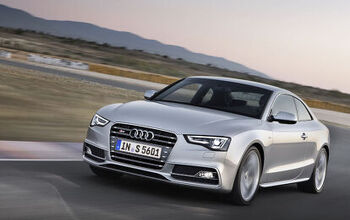
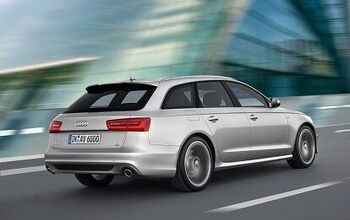
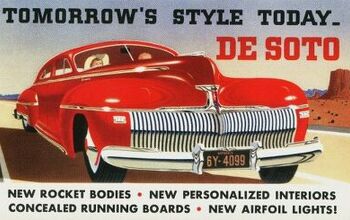
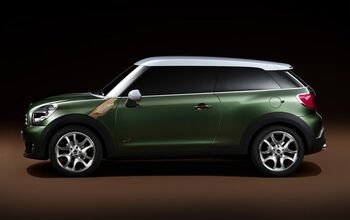
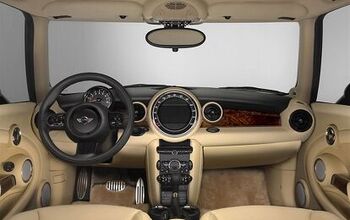










Comments
Join the conversation
Baby Boomers buying Transit Connects????? Get older and have back issues and a gut, getting in and out is a snap on taller cab vehicles. First Scion xB was marketed as a hipster deal; turned out half or so were bought by Boomers because you didn't have to fold yourself up to get in it. If I ever unload the plywood palace, red TC XLT baby.
I am an owner of a 2014 PROMASTER GAS 2500 LWB and like it very much. Normally don't buy detroit crap but i did this time. Love to drive it and get resonably good mileage. Rides great and has gobs of room. brakes squeak which is my only complaint. Looked at the ford but i don't think that smart/intelligent men buy rwd. I have had many fwd windstars and pulled heavy trailers without any problems. People on the promaster forum pull heavy trailers all time and do not need rwd.